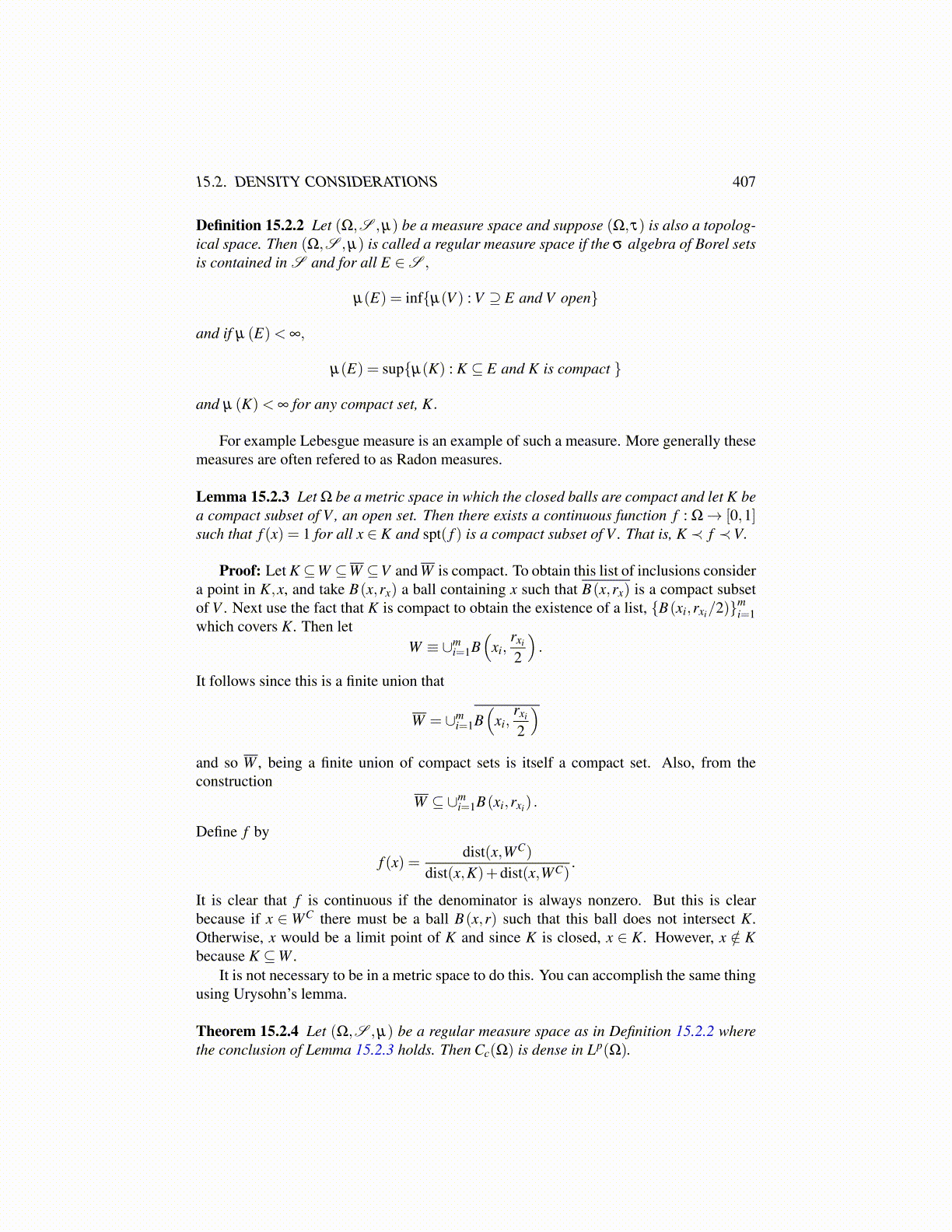
15.2. DENSITY CONSIDERATIONS 407
Definition 15.2.2 Let (Ω,S ,µ) be a measure space and suppose (Ω,τ) is also a topolog-ical space. Then (Ω,S ,µ) is called a regular measure space if the σ algebra of Borel setsis contained in S and for all E ∈S ,
µ(E) = inf{µ(V ) : V ⊇ E and V open}
and if µ (E)< ∞,
µ(E) = sup{µ(K) : K ⊆ E and K is compact }
and µ (K)< ∞ for any compact set, K.
For example Lebesgue measure is an example of such a measure. More generally thesemeasures are often refered to as Radon measures.
Lemma 15.2.3 Let Ω be a metric space in which the closed balls are compact and let K bea compact subset of V , an open set. Then there exists a continuous function f : Ω→ [0,1]such that f (x) = 1 for all x ∈ K and spt( f ) is a compact subset of V . That is, K ≺ f ≺V.
Proof: Let K ⊆W ⊆W ⊆V and W is compact. To obtain this list of inclusions considera point in K,x, and take B(x,rx) a ball containing x such that B(x,rx) is a compact subsetof V . Next use the fact that K is compact to obtain the existence of a list, {B(xi,rxi/2)}m
i=1which covers K. Then let
W ≡ ∪mi=1B
(xi,
rxi
2
).
It follows since this is a finite union that
W = ∪mi=1B
(xi,
rxi
2
)and so W , being a finite union of compact sets is itself a compact set. Also, from theconstruction
W ⊆ ∪mi=1B(xi,rxi) .
Define f by
f (x) =dist(x,WC)
dist(x,K)+dist(x,WC).
It is clear that f is continuous if the denominator is always nonzero. But this is clearbecause if x ∈WC there must be a ball B(x,r) such that this ball does not intersect K.Otherwise, x would be a limit point of K and since K is closed, x ∈ K. However, x /∈ Kbecause K ⊆W .
It is not necessary to be in a metric space to do this. You can accomplish the same thingusing Urysohn’s lemma.
Theorem 15.2.4 Let (Ω,S ,µ) be a regular measure space as in Definition 15.2.2 wherethe conclusion of Lemma 15.2.3 holds. Then Cc(Ω) is dense in Lp(Ω).